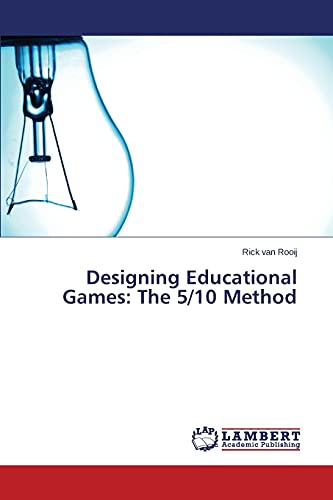Verwandte Artikel zu Designing Educational Games: The 5/10 Method

Inhaltsangabe
Over the last few years educative games have been on a rise. They have been shown to improve insight, involvement, engagement in the subject, scientific discourse, reasoning and inquiry. They have been used in schools with success and good results. However recent studies show that in spite of this potential, games are often misused and are hard to integrate in the instructional environment. Often it is not clear what a game contributes to a students learning or how it should be used because of a lack of learning objectives and outcomes. In this study I propose a method that provides and clearly states these learning objectives allowing for a better assessment of the contribution it can of er to the existing instructional environment. To do this I combine the widely used design model ADDIE with the instructional design method 10 steps to complex learning by Merriënboer. This method is then applied in creating the educational game Moth as a proof of concept.
Die Inhaltsangabe kann sich auf eine andere Ausgabe dieses Titels beziehen.
Reseña del editor
Over the last few years educative games have been on a rise. They have been shown to improve insight, involvement, engagement in the subject, scientific discourse, reasoning and inquiry. They have been used in schools with success and good results. However recent studies show that in spite of this potential, games are often misused and are hard to integrate in the instructional environment. Often it is not clear what a game contributes to a students learning or how it should be used because of a lack of learning objectives and outcomes. In this study I propose a method that provides and clearly states these learning objectives allowing for a better assessment of the contribution it can of er to the existing instructional environment. To do this I combine the widely used design model ADDIE with the instructional design method 10 steps to complex learning by Merriënboer. This method is then applied in creating the educational game Moth as a proof of concept.
Biografía del autor
Born in 1985, Rick grew up with a keen interest in computer games. His education in Artificial Intelligence and Game and Media Technology further increased his interest in game development, the psychology behind the player and the practical side of computer game research. Having left the academic world, Rick now seeks to put theory into practice.
„Über diesen Titel“ kann sich auf eine andere Ausgabe dieses Titels beziehen.
EUR 18,32 für den Versand von Vereinigtes Königreich nach USA
Versandziele, Kosten & DauerNeu kaufen
Diesen Artikel anzeigenEUR 13,72 für den Versand von Vereinigtes Königreich nach USA
Versandziele, Kosten & DauerSuchergebnisse für Designing Educational Games: The 5/10 Method
Designing Educational Games: The 5/10 Method
Anbieter: Devils in the Detail Ltd, Oxford, Vereinigtes Königreich
Zustand: Good. little wear and creases to the cover, pages in nice condition, shipped from UK. Artikel-Nr. 240/BLR/135P 943
Anzahl: 1 verfügbar
Designing Educational Games: The 5/10 Method
Anbieter: Ria Christie Collections, Uxbridge, Vereinigtes Königreich
Zustand: New. In. Artikel-Nr. ria9783659623943_new
Anzahl: Mehr als 20 verfügbar
Designing Educational Games: The 5/10 Method
Anbieter: buchversandmimpf2000, Emtmannsberg, BAYE, Deutschland
Taschenbuch. Zustand: Neu. Neuware -Over the last few years educative games have been on a rise. They have been shown to improve insight, involvement, engagement in the subject, scientific discourse, reasoning and inquiry. They have been used in schools with success and good results. However recent studies show that in spite of this potential, games are often misused and are hard to integrate in the instructional environment. Often it is not clear what a game contributes to a students learning or how it should be used because of a lack of learning objectives and outcomes. In this study I propose a method that provides and clearly states these learning objectives allowing for a better assessment of the contribution it can of er to the existing instructional environment. To do this I combine the widely used design model ADDIE with the instructional design method 10 steps to complex learning by Merriënboer. This method is then applied in creating the educational game Moth as a proof of concept.Books on Demand GmbH, Überseering 33, 22297 Hamburg 76 pp. Englisch. Artikel-Nr. 9783659623943
Anzahl: 2 verfügbar
